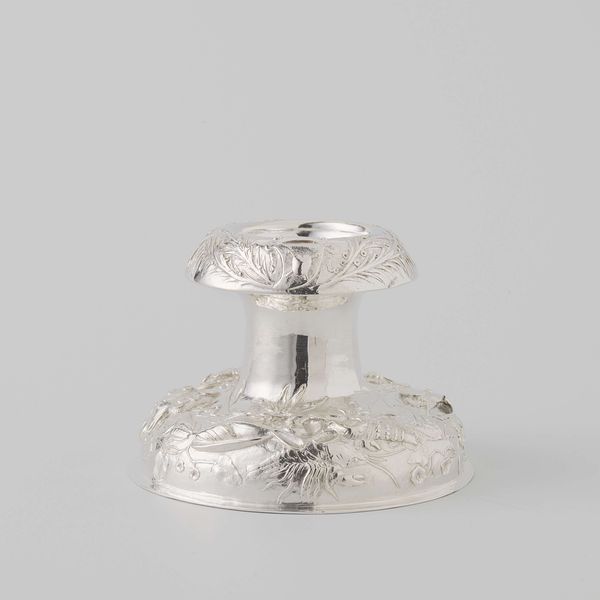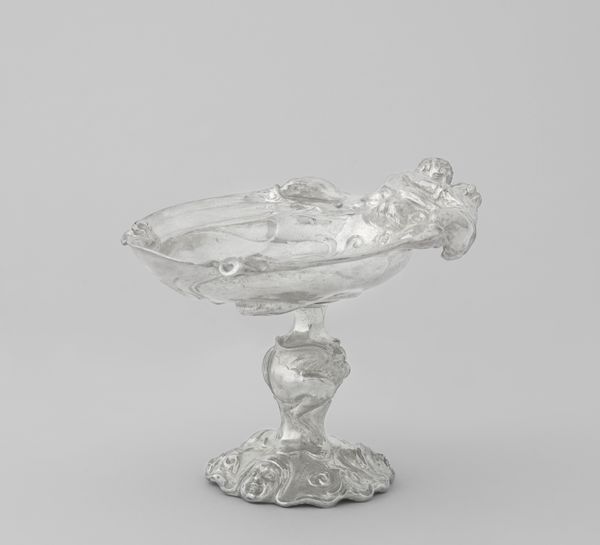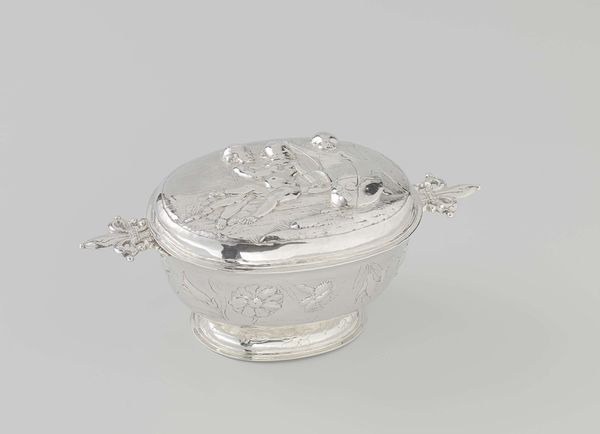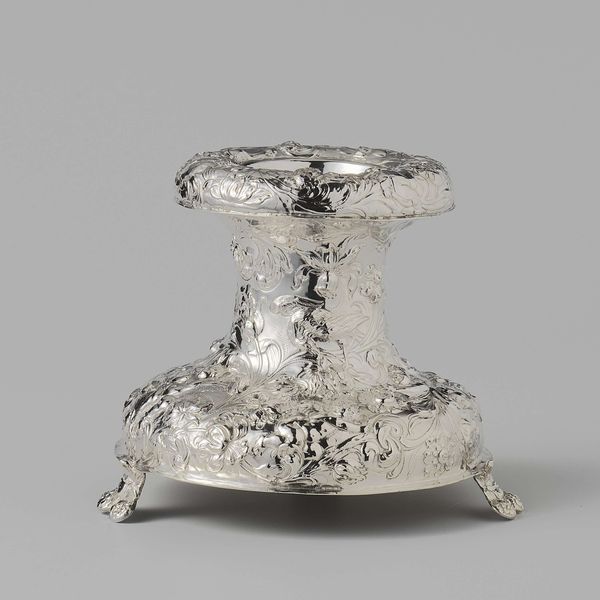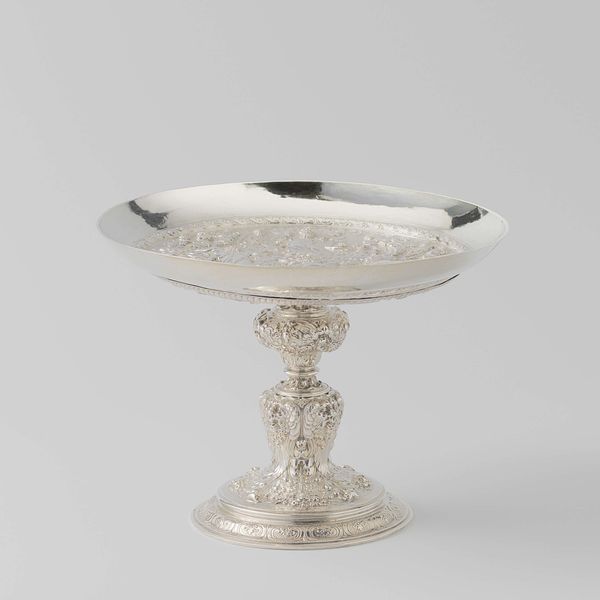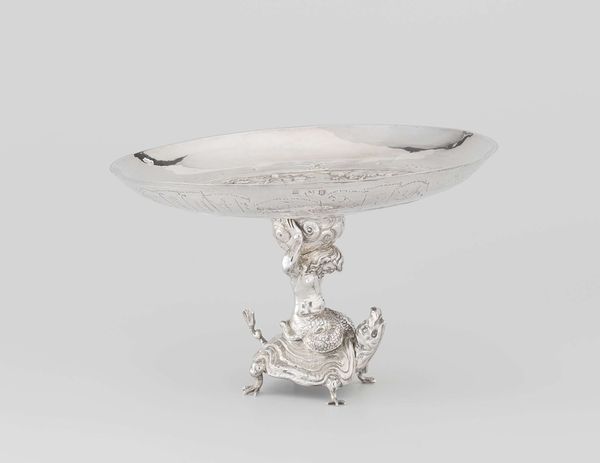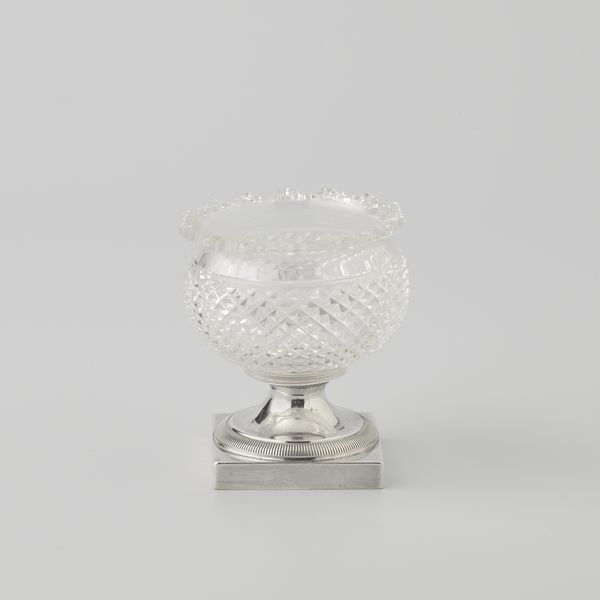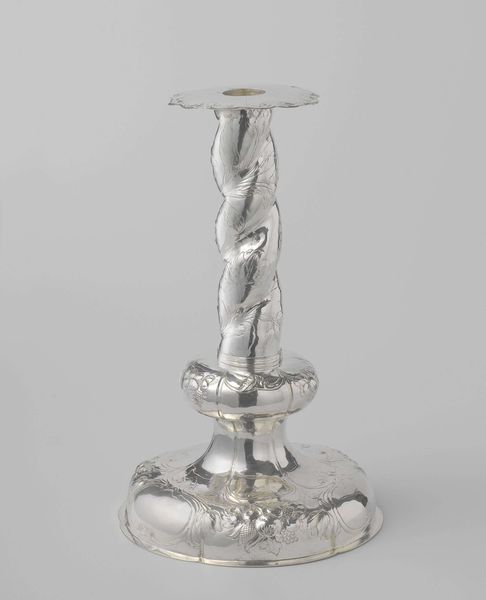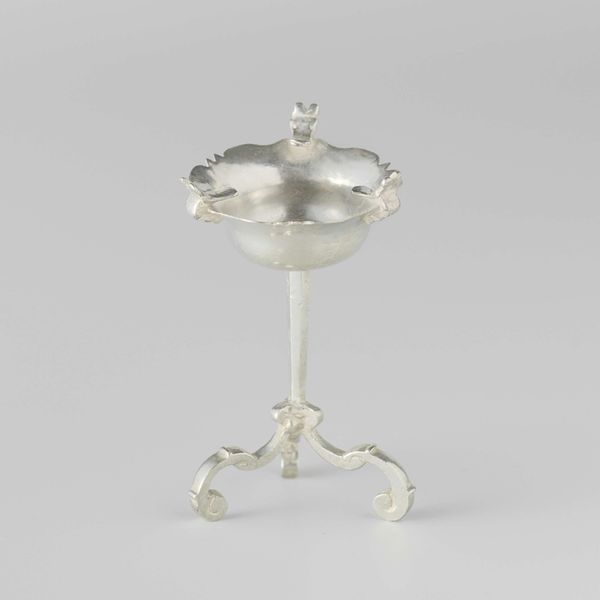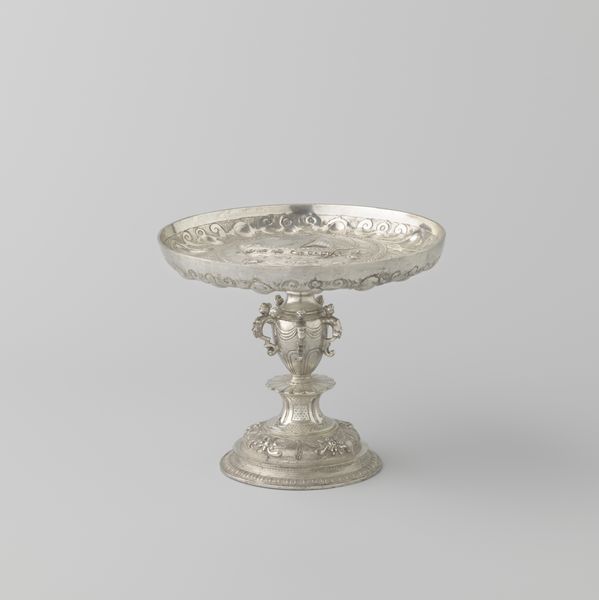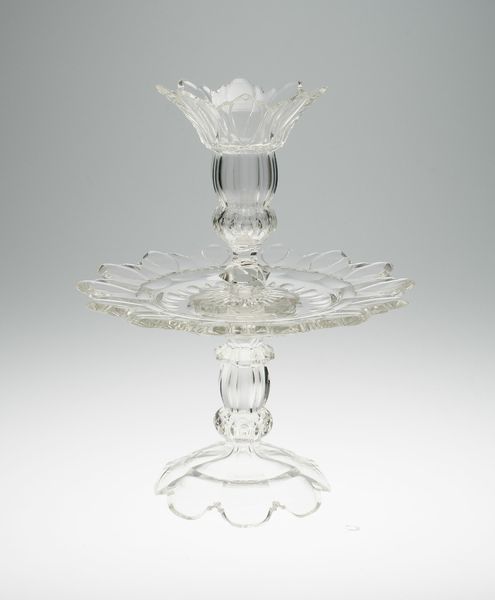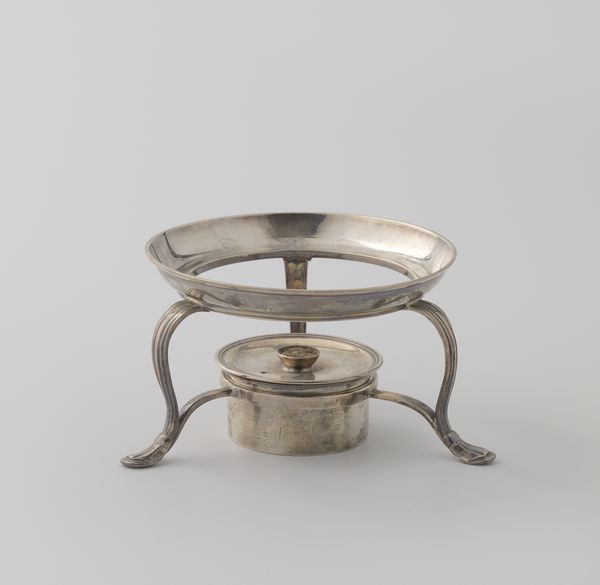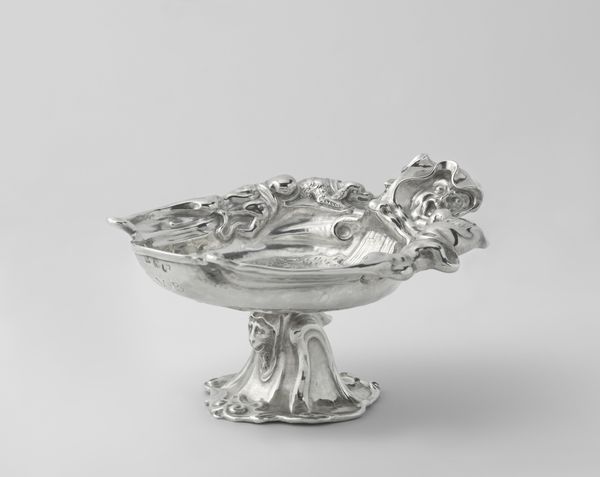
silver, metal, sculpture
#
silver
#
baroque
#
metal
#
sculpture
#
decorative-art
Dimensions: height 7.3 cm, diameter 10.2 cm, weight 120.2 gr
Copyright: Rijks Museum: Open Domain
Editor: This exquisite piece is a silver salt cellar titled "Salt Container with Tooled Fish, Shells, and Marine Animals," crafted by Claes Baardt in 1689. I'm struck by the density of the ornamentation. What social function could such a work fulfill? Curator: Good eye! We should consider the economic power this object signifies. This isn’t just a container for salt; it’s a declaration of wealth and status during the Dutch Golden Age. Silver, a precious metal, transformed into a vessel teeming with ocean life – a commentary, perhaps, on the Netherlands' dominance in maritime trade? Consider also how enslaved people would have been involved in every stage of the creation of these types of objects and also in acquiring and distributing its content - the salt itself. Who was this actually *for*? Editor: It's almost aggressively ornamental, though, isn’t it? Like, 'look how much silver I can afford to waste on this tiny object!' But isn't salt a common commodity? Is the intense craftsmanship maybe trying to imbue this 'common' product with something precious and exotic? Curator: Precisely! This gets to the heart of the relationship between consumption, class, and colonial exploitation. Salt, while a necessity, becomes elevated to an art form, masking perhaps, through its sheer beauty, the socio-economic realities of the time. The fish, shells, and sea creatures – were these intended to impress viewers with the global reach of Dutch trade, and the plunder it allowed? Does this level of crafted luxury normalise or hide underlying inequalities? Editor: So, it’s not *just* a fancy salt cellar. It’s actually deeply connected to larger social and political currents of the time, commenting on colonialism, power and the commodification of everyday goods! I would never have guessed! Curator: Exactly. And thinking critically about decorative objects allows us insight into often ignored historical context. Keep questioning those appearances!
Comments
No comments
Be the first to comment and join the conversation on the ultimate creative platform.
